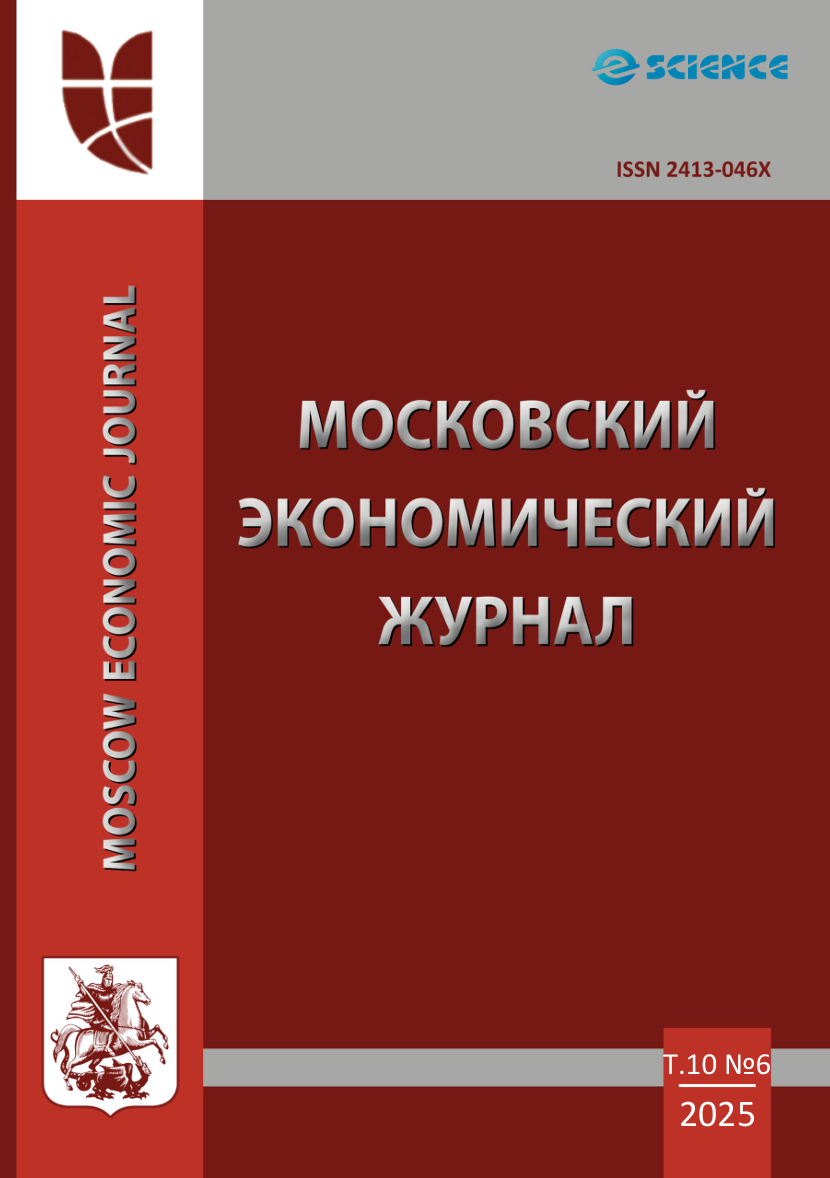UDC 338.47
The study is devoted to the analysis of charging infrastructure for electric vehicles in the context of land management and sustainable development of rural regions. Economic indicators (CAPEX, OPEX) and payback periods for alternating current (AC) and direct current (DC) stations are considered. It is found that AC stations are more economical and environmentally friendly, which is especially important for rural areas where traffic density is lower. DC stations, despite their high costs, may be in demand in logistics and transportation hubs. Special attention is paid to energy efficiency, reducing the load on power grids and minimizing carbon footprint. Practical recommendations for the introduction of charging stations are proposed, taking into account the specifics of land use and land monitoring requirements.
charging infrastructure, electric vehicles, capital costs, carbon footprint, AC stations, DC stations, energy efficiency, land management, environmental sustainability, land monitoring
1. Mezhdunarodnoe energeticheskoe agentstvo (IEA) (2023). Global'nyy obzor po elektromobilyam 2023: sootvetstvie klimaticheskim ambiciyam. Parizh: IEA Publications. URL: https://www.iea.org/reports/global-ev-outlook-2023(data obrascheniya: 05.04.2025).
2. Bloomberg New Energy Finance (BNEF) (2023). Prognoz po elektromobilyam na 2023 god. N'yu-York: Bloomberg Finance L.P. URL: https://assets.bbhub.io/professional/sites/24/2431510_BNEFElectricVehicleOutlook2023_ExecSummary.pdf (data obrascheniya: 05.04.2025).
3. McKinsey & Company (2022). Buduschee zaryadnoy infrastruktury: bystro, umno i masshtabiruemo. McKinsey Insights. URL: https://www.mckinsey.com (data obrascheniya: 01.04.2025).
4. Deloitte (2023). Elektromobili: kurs na 2030 god. Deloitte Insights. URL: https://www2.deloitte.com (data obrascheniya: 04.04.2025).
5. Gatiyatov I.Z., Pavlov P.P., Shamsutdinov E.V. (2016). Vnedrenie avtonomnogo elektricheskogo transporta: perspektivy i problemy. V: Sovremennye problemy bezopasnosti zhiznedeyatel'nosti: intellektual'nye transportnye sistemy, s. 154–158.
6. Evropeyskaya komissiya (2022). Reglament po infrastrukture al'ternativnyh vidov topliva (AFIR). Bryussel'. URL: http://data.europa.eu/eli/reg/2023/1804/oj (data obrascheniya: 01.04.2025).
7. Bahteev Sh.R., Bahteev K.R. (2017). Analiz sostoyaniya rynka elektromobiley v Rossii i tendencii ego razvitiya. V: Pokolenie buduschego: Vzglyad molodyh uchenyh-2017, s. 36–41.
8. Tesla nauchilas' predskazyvat' dostupnost' zaryadnyh stanciy dlya klientov k momentu pribytiya. URL: https://overclockers.ru/hardnews/show/129550/tesla-nauchilas-predskazyvat-dostupnost-zaryadnyh-stancij-dlya-klientov-k-momentu-pribytiya (data obrascheniya: 03.04.2025).
9. Shackaya E.Yu. (2022). Rol' infrastruktury kak aktivnogo elementa obespecheniya ustoychivogo razvitiya sovremennyh ekonomicheskih sistem. Ekonomika, predprinimatel'stvo i pravo, t. 12, № 4, s. 1405–1416.
10. Gacun D.A. (2023). Dekarbonizaciya transportnoy sistemy v Norvegii. s. 311.
11. Kong Q., et al. (2018). The role of charging infrastructure in electric vehicle implementation within smart grids. Energies, t. 11, № 12, s. 3362.
12. Sharma G., et al. (2020). Comparison of common DC and AC bus architectures for EV fast charging stations and impact on power quality. ETransportation, t. 5, stat'ya 100066.
13. Nansai K., et al. (2001). Analiz zhiznennogo cikla zaryadnoy infrastruktury dlya elektromobiley. Prikladnaya energetika, t. 70, № 3, s. 251–265.
14. IRENA (2023). Prognoz preobrazovaniya mirovoy energeticheskoy sistemy 2023 g.: strategiya po ogranicheniyu global'nogo potepleniya 1,5 °C. Abu-Dabi: IRENA. URL: https://www.irena.org/-/media/Files/IRENA/Agency/Publication/2023/Jun/IRENA_WETO_2023_Summary_RU.pdf (data obrascheniya: 10.04.2025).
15. Yu J. et al. (2018). Evaluating the effect of policies and the development of charging infrastructure on electric vehicle diffusion in China //Sustainability. – T. 10. – №. 10. – S. 3394.
16. Soluyanov Yu. I., i dr. (2025). Opredelenie raschetnyh elektricheskih nagruzok zaryadnoy infrastruktury dlya elektromobiley, integrirovannoy v elektricheskie ustanovki zhilyh i obschestvennyh zdaniy. Izvestiya vysshih uchebnyh zavedeniy. Problemy energetiki, 26(6), 94–107.
17. Hayretdinova A. R., Kasatkin I. I., Kolbasov A. F. (2025). Model' razvitiya zaryadnoy infrastruktury goroda Moskvy. Moskovskiy transport. Nauka i proektirovanie, (1), 14–22.
18. Pirgulyeva O., Redzhepgulyev T., Saidov Y. (2025). Novye tehnologii i tendencii v oblasti elektricheskogo transporta. Vestnik nauki, 4(2 (83)), 514–519.
19. Lesnichenko, V. A. Povyshenie komfortnosti prozhivaniya na osnove principov zelenogo stroitel'stva / V. A. Lesnichenko, Yu. A. Cypkin, T. V. Bliznyukova // Aktual'nye voprosy zemlepol'zovaniya i upravleniya nedvizhimost'yu : Sbornik statey V Nacional'noy nauchno-prakticheskoy konferencii, Ekaterinburg, 07 aprelya 2023 goda / Otv. redaktor E.A. Akulova. – Ekaterinburg: Ural'skiy gosudarstvennyy gornyy universitet, 2023. – S. 307-313. – EDN DNUXZP.
20. Koncepciya ustoychivogo prostranstvennogo razvitiya (osnovnye principy cifrovoy modeli gorodskih i sel'skih territoriy) / Yu. A. Cypkin, A. A. Fomin, R. A. Kamaev, S. V. Orlov // Stolypinskiy vestnik. – 2021. – T. 3, № 5. – EDN MEYCCL.
21. Strategicheskaya cifrovaya model' ustoychivogo prostranstvennogo regional'nogo razvitiya / Yu. A. Cypkin, R. A. Kamaev, S. V. Orlov [i dr.] // Prostranstvennoe razvitie territoriy v usloviyah cifrovizacii: socio-ekologo-ekonomicheskie sistemy : materialy Vserossiyskoy nauchno-prakticheskoy konferencii s mezhdunarodnym uchastiem, Groznyy, 08–09 dekabrya 2020 goda. – Groznyy: Spektr, 2020. – S. 92-96. – DOIhttps://doi.org/10.34708/GSTOU.CONF.2021.48.93.014. – EDN LRNYIW.











